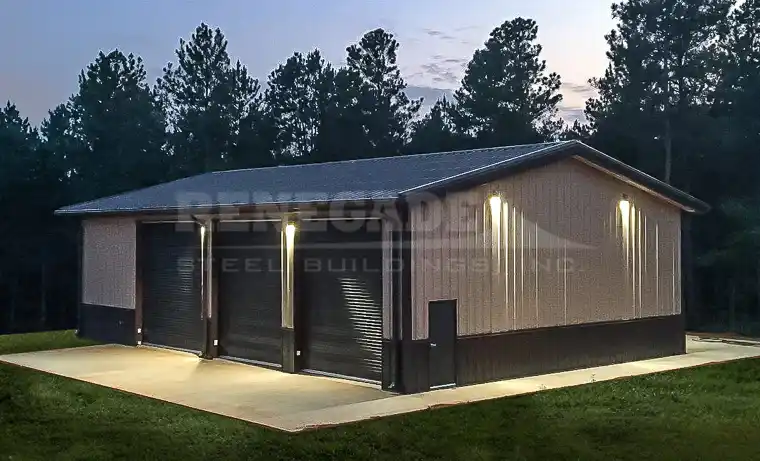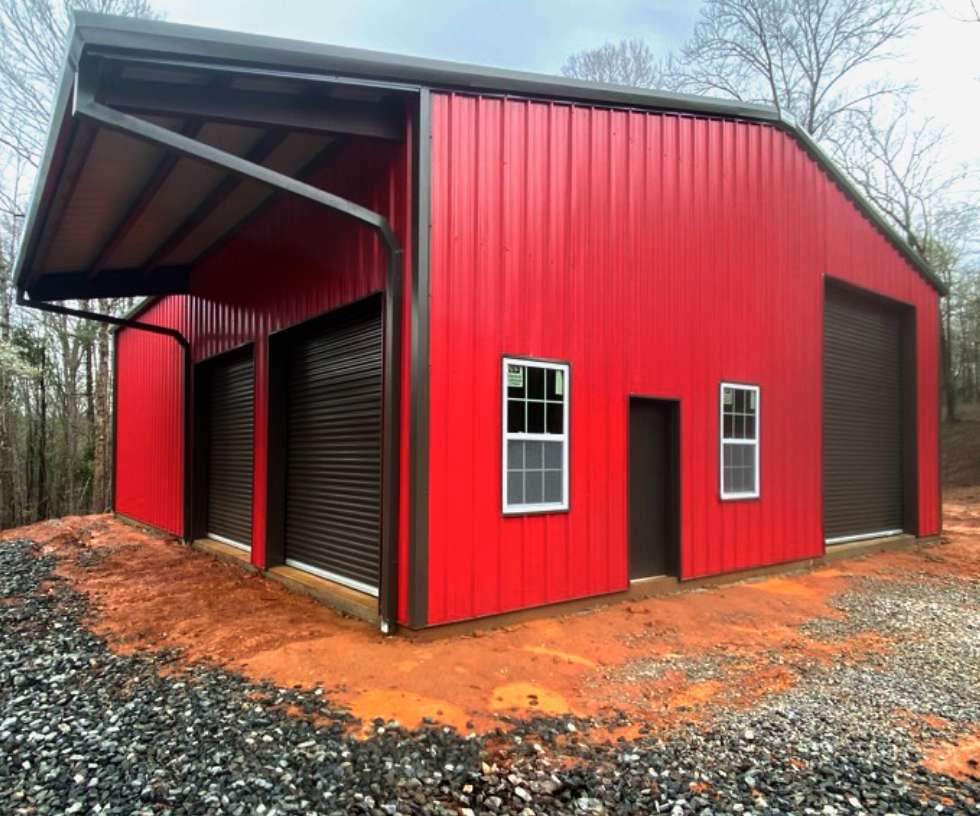Specialist Guide to Steel Structure Layout: Making Best Use Of Performance and Durability
In the world of building and construction, the choice of building product holds critical relevance in identifying the efficiency and durability of a framework. Steel, with its extraordinary strength, longevity, and flexibility, has actually become a preferred option for contemporary building layout. Engineers and designers are continuously exploring innovative ways to harness the capacity of steel in constructing lasting and long-lasting structures. From enhancing style factors to consider to applying affordable building and construction methods, the trip towards optimizing performance and longevity in steel building style is a diverse one, using a mix of functional obstacles and imaginative options that drive the sector onward.
Benefits of Steel Buildings
Steel structures provide exceptional durability and cost-effectiveness compared to typical construction products. The toughness of steel provides outstanding architectural honesty, making it a favored selection for structures that need to hold up against severe climate problems or hefty loads.
In terms of cost-effectiveness, steel structures are often much more cost effective than structures made from other materials. The reliable building procedure of steel buildings can lead to lowered labor expenses and shorter job timelines. Steel's resilience likewise equates to decrease upkeep expenditures over time, as there is less need for replacements or fixings compared to conventional building materials.
Design Factors To Consider for Efficiency
Offered the advantages of steel structures in terms of longevity and cost-effectiveness, it is crucial to focus on design considerations that make best use of efficiency and longevity. When developing a steel structure for ideal performance, variables such as the insulation, layout, and alignment should be carefully considered. Reliable designs can decrease product waste throughout building and construction and boost the functionality of the structure. Additionally, selecting the right orientation can assist maximize all-natural light exposure, lowering the requirement for synthetic lighting and lowering power expenses.

In addition, including energy-efficient systems, such as HVAC, illumination, and renewable power resources, can additionally enhance the efficiency of steel buildings. By integrating these design factors to consider, steel structures can achieve optimal performance and long life, supplying sustainable and cost-effective services for different construction projects.
Structural Honesty and Long Life

Furthermore, the option of top notch steel and finishes is essential for durability. Corrosion-resistant finishings protect versus rust and damage, lengthening the life of the structure. Normal maintenance, including assessments for signs of wear or damages, is also critical for identifying and attending to issues prior to they endanger the structure's stability. By prioritizing architectural integrity in the layout stage and throughout the structure's life expectancy, proprietors can ensure their steel frameworks remain secure, reliable, and resilient for years ahead.
Economical Building And Construction Methods
Reliable building techniques play a pivotal role in taking care of costs without jeopardizing the quality and honesty of steel building jobs. One cost-effective method is the usage of pre-engineered steel structure systems. These systems are developed off-site and afterwards assembled on-site, lowering building time and labor expenses. Furthermore, pre-engineered steel structures are recognized for their durability and require marginal maintenance, leading to long-lasting price savings.
Another cost-effective technique is the design-build technique, have a peek at this site where the design and building and construction stages are integrated. This method promotes partnership between the style and building teams, enhancing the procedure and lessening delays and price overruns (steel buildings). By including all stakeholders from the start, prospective issues can be recognized and dealt with early, saving both money and time
Moreover, adopting lasting building and construction methods, such as using recycled steel and including energy-efficient attributes, can lead to substantial price savings in the long run. These methods not just minimize construction waste but also lower operational costs with boosted power effectiveness. In final thought, carrying out cost-efficient building methods is important for taking full advantage of efficiency and making sure the longevity of steel building projects.
Maintenance Tips for Durability
Correct upkeep methods are critical for guaranteeing the durability and architectural honesty of steel structures. Normal examinations are vital to determine any indicators of corrosion, damage, or use that can endanger the building's resilience. As part of a detailed upkeep strategy, it is very important to promptly deal with any type of issues that emerge to prevent use this link them from rising and triggering more considerable damages.

An additional vital upkeep suggestion is to evaluate the building's connections, fasteners, and welds to guarantee they are safe and in good problem. Any type of loose or broken components need to be repaired or replaced without delay to keep the architectural honesty of the building. By carrying out an aggressive maintenance routine, steel structure owners can maximize the long life and performance of their frameworks.
Conclusion
In verdict, steel structures use many advantages such as long life, performance, and cost-effectiveness. By thoroughly thinking about layout aspects, making sure architectural honesty, and using cost-efficient building methods, steel structures can be enhanced for optimal effectiveness and longevity.
From maximizing style factors to consider to carrying find more out affordable construction methods, the trip towards making the most of performance and long life in steel building design is a complex one, providing a mix of functional obstacles and creative remedies that drive the industry onward.
Offered the advantages of steel buildings in terms of longevity and cost-effectiveness, it is vital to focus on design considerations that optimize effectiveness and long life. When making a steel structure for ideal effectiveness, aspects such as the orientation, format, and insulation need to be thoroughly considered. In conclusion, implementing cost-efficient construction approaches is crucial for making best use of efficiency and guaranteeing the durability of steel structure projects.
By thoroughly considering style aspects, guaranteeing structural honesty, and utilizing economical construction methods, steel buildings can be optimized for maximum performance and long life.